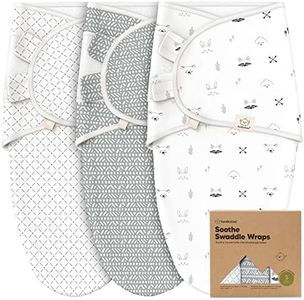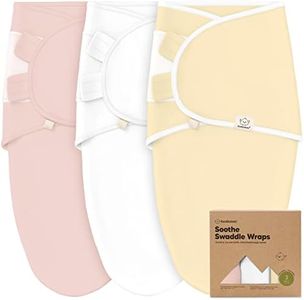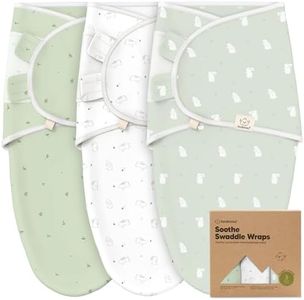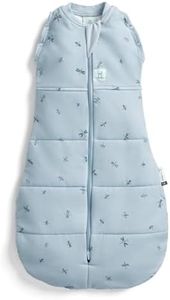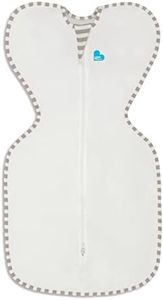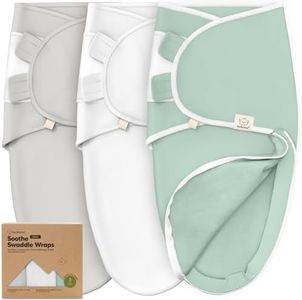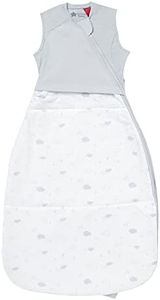We Use CookiesWe use cookies to enhance the security, performance,
functionality and for analytical and promotional activities. By continuing to browse this site you
are agreeing to our privacy policy
10 Best Sleep Sack Newborn
From leading brands and best sellers available on the web.Buying Guide for the Best Sleep Sack Newborn
Choosing a sleep sack for a newborn is an important step in creating a safe and comfortable sleeping environment. Sleep sacks, also known as wearable blankets, help reduce the risks associated with loose bedding in the crib while keeping your baby cozy and at an appropriate temperature. The key is to focus on both the materials used and the design of the sleep sack to ensure that it matches your baby's needs, the season, and your convenience in daily use.MaterialThe material of a sleep sack is what it’s made from, commonly cotton, fleece, or bamboo fabric. This spec affects how soft, breathable, and warm the sack will be. Cotton is gentle on sensitive skin and very breathable, making it ideal for most seasons. Fleece is thicker and warmer, suitable for colder weather or chilly rooms. Bamboo is super soft and naturally moisture-wicking, great for temperature regulation. To pick the right one, think about whether your baby runs warm or cold and what the typical room temperature is. A cotton or bamboo sleep sack works well year-round for most homes; fleece is reserved for colder climates or winter.
TOG RatingTOG stands for 'Thermal Overall Grade,' and is a measure of the sleep sack's warmth. Lower TOG ratings (like 0.5) indicate lighter, more breathable sacks suited for warm rooms or summer months. Medium TOG ratings (1.0-1.5) are good for spring or fall, and higher ratings (2.5 and above) provide extra warmth for cold nights. Always match the TOG to the baby's sleep environment—if your nursery is warm, go for a lower TOG; if it’s cool, a higher TOG may be needed. This ensures your baby stays comfortable and avoids overheating or chilling.
Size and FitSize refers to the length and width of the sleep sack and its fit for your baby’s weight and age. A sleep sack should be snug around the shoulders but loose around the hips and legs to allow for proper hip development. Choosing the right size is important for both safety and comfort—too big, and your baby could slip down; too small, and it could restrict movement. Most manufacturers provide size charts based on your baby’s weight and length. Carefully check these before buying and when in doubt, err on the smaller side for a more secure fit.
Closure TypeClosure type describes how the sleep sack opens and closes, with options like zippers, Velcro, or snaps. Zippers are the most common and convenient for quick nighttime changing, especially if they’re two-way or inverted zippers that don’t require full removal. Velcro is often used in swaddle-style sleep sacks but can be noisy and wear out over time. Snaps are secure but can be a little trickier in the dark. Think about how often you’ll be changing diapers at night and choose a closure that makes things easiest for you while staying securely fastened during sleep.
Swaddle FeaturesSome newborn sleep sacks come with swaddle features like wings or wraparound panels to keep your baby’s arms snug. This mimics the feeling of being in the womb and can help soothe newborns who have a strong startle reflex. Others allow for ‘arms out’ sleeping for babies who start to roll or prefer more freedom. If your baby likes being tightly swaddled and hasn’t yet begun to roll over, a swaddle sleep sack may be helpful. If your baby is older or more mobile, you may need a basic sleep sack that lets the arms move freely.
